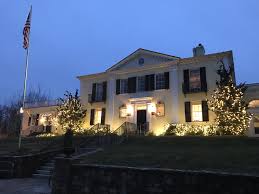The New York Times reported on a conference of prominent lawyers to address the following question, “Do people have a constitutional right to freedom from air pollution and other environmental hazards and annoyances?”
What was an “unusual meeting” in the Times’s phrasing was held not last month but a half century ago at a rural conference center known as Airlie House just outside Warrenton, Virginia. The venerability of that clipping can be seen by the newspaper’s citing “the new field of ‘environmental law.’”
According to the Times, “For two days lawyers . . . discussed their special problems, and possible strategic responses, in a closed-door conference designed not for public consumption but, rather, as orientation for themselves.”

It was a meeting of the minds, the best minds in the field. Ralph Nader was there, perhaps the most famous attendee, but from the perspective of today the list of other participants, most of them young lawyers, looks like a Who’s Who of the field.
“The principal conclusion of the lawyers,” reads the newspaper account, “was that some radical changes in the traditional patterns of jurisprudence are necessary to accommodate growing public dissatisfaction with the deteriorating environment.”
The group of attorneys concluded that environmental lawsuits were having a difficult time in the courts, “because the law was geared to the old concept of offenses by one individual against another, the tradition that governmental discussion was unchallengeable, and a presumption that public inconvenience was acceptable in the cause of private enterprise.”
An exception noted by the newspaper was the 1965 Storm King Mountain case in New York state, in which a federal appeals court had ruled that “not only conservationists had a right to challenge a Federal Power Commission permit granted for the plant, but also that the commission had erred in not considering the environmental impact of the plant.”
Despite that victory, the assembled lawyers (and a few scientists) enumerated the challenges such suits must overcome. The burden of proof was on the plaintiffs, and the corporations involved quickly hired all the expert witnesses. Early efforts at environmental assessment were not seen as enforceable by the courts. And, finally, lawsuits cost money, something that most conservation groups had in short supply.
Nader at the time was moving from automotive safety to a broader array of consumer interests. He questioned whether the system of business as practiced in the United States could be called capitalism. “I think it’s more corporate socialism,” he said.
Another attendee was Victor J. Yannacone, an anti-pesticides crusader, who told the assembly, “It’s about time the legal profession got some ecological sophistication. We have to invent causes of action. We have to find new legal rules.” He concluded, “Every bit of progressive social legislation of the last 50 years has come about only after litigation.” He noted that “even when we lose,” trials “focus public attention and disseminate information about intolerable conditions,” energizing a public response.
The Times noted that the lawyers identified three prongs of attack. The first was the common nuisance suit. Second was the new type of mass-action suit. And the third was invoking the government’s responsibility to the public trust. There was also some talk about whether the Ninth Amendment could be read to imply a right to environmental quality.
Finally, “there was discussion about establishing a nationwide conservation legal organization . . . with a national center coordinating regional branches where talent could be systematically mustered on a semivolunteer basis.” The conferees appointed Sydney Howe, president of the Conservation Foundation, as chair of an ad hoc group that would examine how to establish such an organization.
The committee went to work to create an outfit to systematically track the new field through a loose-leaf expert publication, and to research pressing problems and legal responses. And only three months after the Airlie House conference, the Environmental Law Institute was incorporated.
[This piece originally appeared in the September-October 2019 issue of The Environmental Forum® and is reprinted with permission.]
